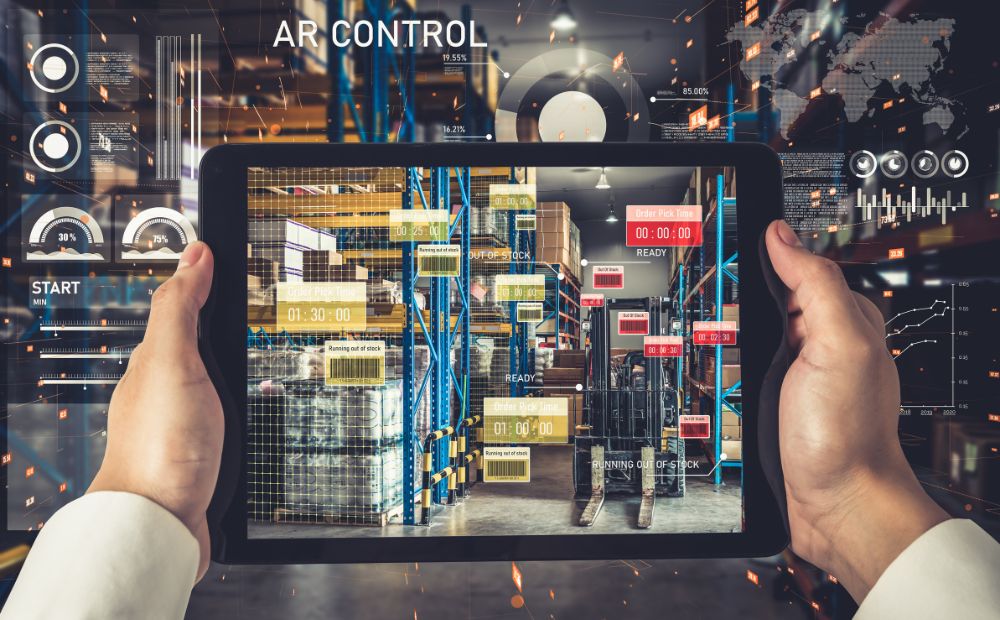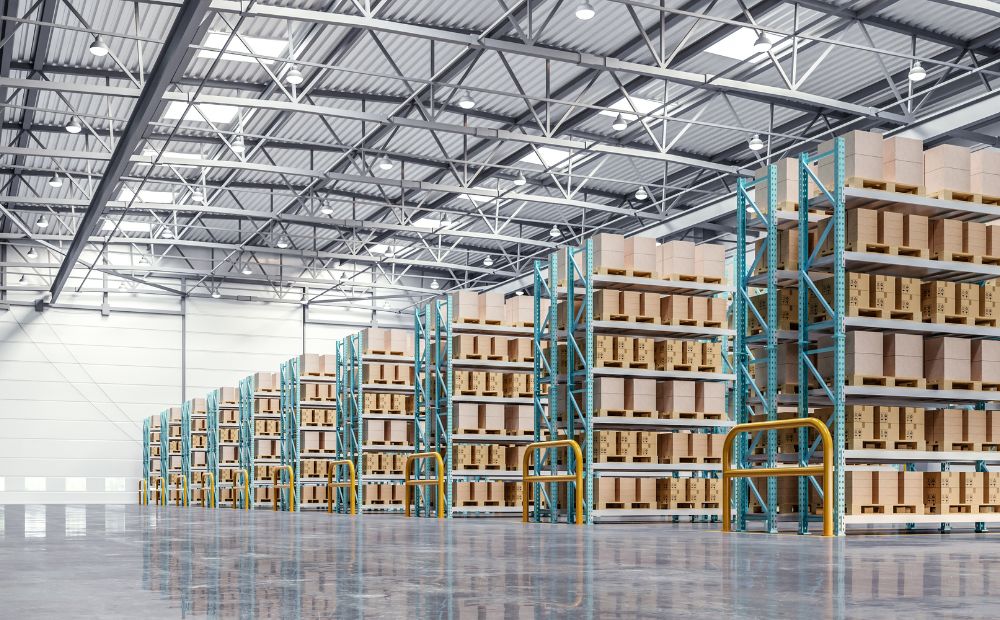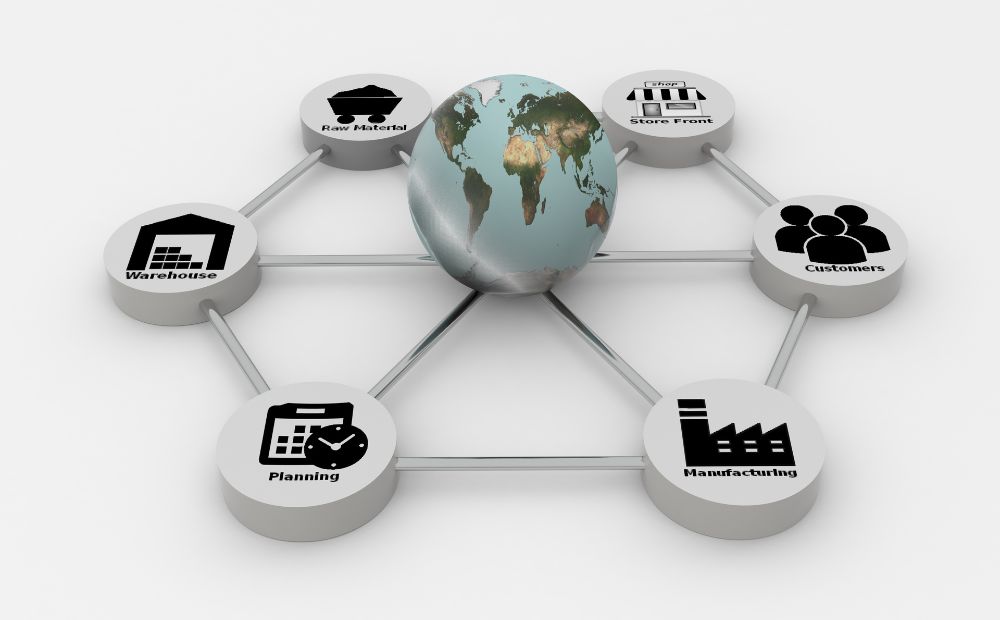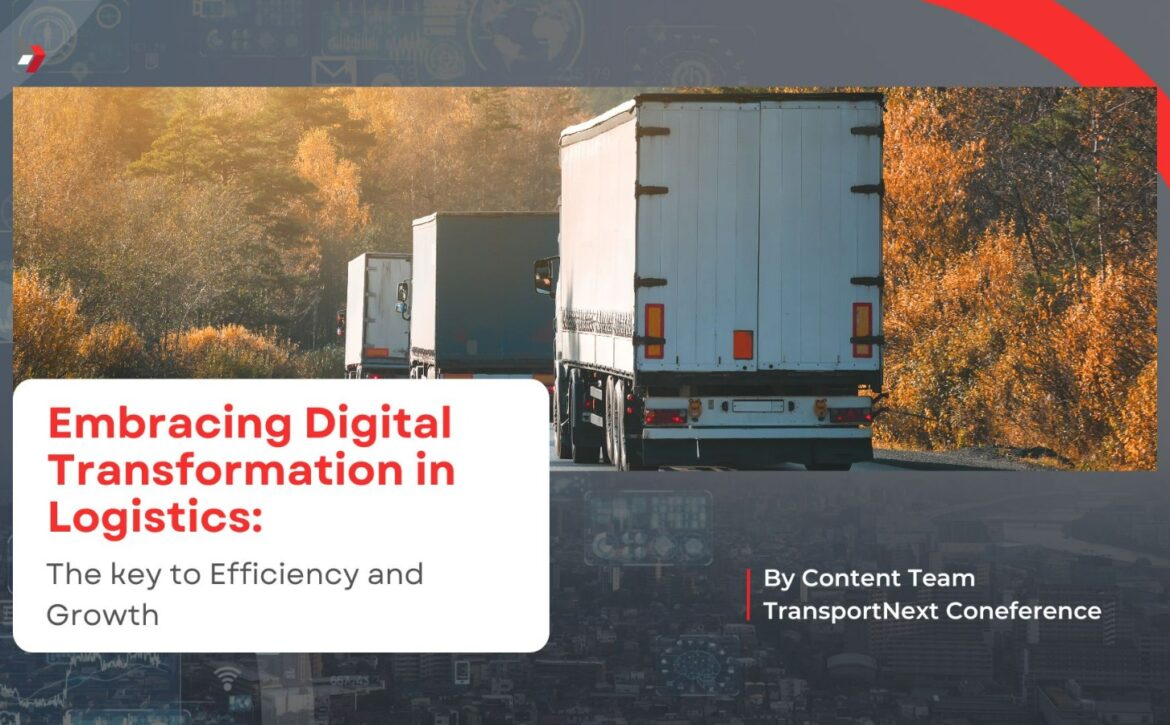Warehouse Management Systems: What You Need To Know
A Warehouse Management System (WMS) is a software tool that assists warehouse operators and third-party logistics providers (3PLs) in managing and tracking inventory, orders, and deliveries. A WMS automates tasks such as monitoring inventory levels, optimizing storage layouts, and creating pick lists, which enhances a business’s efficiency and productivity.
Table of Contents
The significance of warehouse management systems (WMS) has grown recently due to the increase in online shopping, mobile phone and internet usage, and the pandemic, which has accelerated the need for automated solutions for online businesses. While WMS can be used in small and large warehouses, they become particularly advantageous in spaces larger than 20,000 square feet where operations become more complex.
With eCommerce, growth predicted to increase the global warehouse automation market by €24.8 billion (10.41% CAGR) by 2026, along with the challenges of managing multi-channel listings and courier services, modern WMS solutions are now essential for warehouses, 3PLs, and eCommerce retailers to stay competitive.
Warehouse management is a vital part of the supply chain, handling the storage and movement of materials essential for business operations. This encompasses receiving, storing, and shipping goods, along with managing inventory levels and stock locations. The efficiency and accuracy of the supply chain are directly tied to the effectiveness of warehouse processes. Ineffective warehouse management can disrupt material flow and impede business functionality.
Warehouse Management Systems (WMS) are often used alongside or integrated with other systems like Enterprise Resource Planning (ERP) systems, order management systems, or Transport Management Systems (TMS), such as shipping management software.WMSs are crucial for operations in warehouses and distribution centers, including picking items for shipment and storing received goods. They use data from barcode readers and RFID tags to keep the ERP system updated with the latest inventory information, ensuring synchronized data between the WMS and ERP. The ERP system covers tasks from accounting and invoicing to order and inventory management, while the TMS manages shipping processes.
The TMS stores detailed carrier information and serves as a communication system for planning, executing, and tracking shipments. Integration of TMS with WMS can enhance coordination of inbound and outbound logistics tasks. Orders are generally imported automatically from ERP or order management systems linked to the TMS, including customer details and item information for accurate shipments. The TMS then provides shipment details (such as tracking information, carrier name, and cost) to the ERP system for accounting and order management. This information may also be sent to the Customer Relationship Management (CRM) module to update customers’ order status.
Types of WMS
There are 4 Major Types of WMS:
1. Standalone System
A standalone system is an on-site software typically installed directly on a business’s local hardware. It provides essential features necessary for efficient day-to-day warehouse operations and inventory management. While standalone WMS systems differ from provider to provider, they consistently offer core functions such as:
- Inventory tracking
- Picking and packing
- Shipping
- Returns
However, standalone systems may only sometimes support broader functionalities, making them better suited for small warehouse operations with limited budgets and fewer dependencies, such as extensive integrations. For businesses planning significant growth shortly, investing in a more robust warehousing management system may be advisable.
With its primary focus on warehouse management, a standalone system often includes advanced features that streamline various processes. For instance, a small local electronics retailer relies on a standalone WMS to efficiently track inventory, streamline picking and packing processes, and handle shipping and returns.
Standalone systems may lack broader functionalities making them more suitable for small warehouse operations with limited budgets and integration needs.
2. Cloud-Based System
In the past, WMS software was often purchased and delivered as physical media like disks or CDs. In this day and age, cloud-based warehouse management systems have become popular due to their ease of implementation, scalability, enhanced security, and flexible, customizable features.
A cloud-based WMS is a web-based solution hosted on external servers and supported by an external IT team. This eliminates the need for on-site installation and complex integration with existing systems, making it an excellent choice for many businesses. For example, Amazon, a leading e-commerce company, uses cloud-based WMS solutions to manage its extensive warehouse operations efficiently without the need for extensive on-site setup.
Cloud-based systems require no on-site installation or complex integration with existing systems. When upgrades are necessary, the WMS vendor handles them, preventing downtime. For instance, Shopify, an online retail platform, utilizes a cloud-based WMS to manage inventory and shipping processes. When the system needs an upgrade, the vendor takes care of it, allowing Shopify to continue operations without interruption.
With a cloud-based system, the SaaS provider controls the maintenance and improvements of the entire WMS. If a company prefers full control over its system and data, a standalone system might be more suitable. For example, Boeing, with strict data security requirements, might choose a standalone system to maintain complete control over their warehouse management processes.
3. Supply Chain Modules

Warehouse Management Systems
Warehouse management is just a small component of the entire supply chain. While warehouse management solutions assist fulfillment businesses with tasks like picking, shipping, and receiving, supply chain management software offers features that service the entire supply chain. A supply chain module WMS can handle various functions, including:
- – Risk analysis
- – Current market activities
- – Vendor partnerships
- – Customer service
- – Transportation management
- – Manufacturing and raw material handling
A supply chain management system covers every activity from sourcing raw materials to final customer delivery, including transportation and vendor partnerships. This makes supply chain modules ideal for scaling businesses operating across the supply chain. For example, Procter & Gamble utilizes a comprehensive supply chain management system to manage its global operations, from raw material procurement to product delivery.
Supply chain modules may offer functionalities that are unnecessary for certain businesses. Opting for a larger system with irrelevant features can be wasteful. For instance, a local business might find a full supply chain management system excessive and instead benefit from focusing on improving its existing processes.
4. Integrated ERP System
Enterprise Resource Planning (ERP) is a comprehensive system that, while not always associated directly with warehouse management systems (WMS), is ideal for businesses aiming to enhance the overall efficiency of their supply chain operations. ERP systems offer extensive features and support core applications such as HR, accounting, marketing, and general supply chain management solutions. A WMS is often integrated into ERP software, enabling businesses to manage inventory, shipping, and other operations alongside other business functions. This integration is excellent for consolidating all business operations into a single system, making it highly beneficial for companies with extensive supply chains.
For example, Walmart uses an integrated ERP system to streamline its inventory management, shipping, and various other operations, ensuring seamless coordination across its vast supply chain. An integrated ERP system includes WMS functionalities, allowing businesses to manage inventory, shipping, and other operations efficiently. This integration is beneficial for consolidating all operations into one system, which is particularly advantageous for large supply chains. For instance, Nestle utilizes an ERP system to manage its complex global supply chain, enhancing coordination and efficiency across its operations.
ERP systems can be very costly, from initial implementation to ongoing subscription and infrastructure expenses. They can also be complicated and expensive to implement, so it’s crucial to ensure that this type of system is necessary before proceeding. For example, a small manufacturing company might find the cost and complexity of an ERP system prohibitive and opt for a simpler, more affordable solution tailored to their specific needs.
Choosing a Suitable Warehouse Management Systems (WMS)
It’s crucial to understand that warehouse inventory management systems extend beyond traditional warehouses. With a WMS system, any company can optimize its inventory and distribution processes, not solely restricted to third-party logistics (3PL) warehouse managers.
Whether you operate as a B2B warehouse operator overseeing multiple facilities or a B2C e-commerce brand selling across diverse online platforms, a warehouse inventory system can streamline business operations, reduce errors, and minimize the time devoted to management tasks. When choosing a Warehouse Management System (WMS), consider the following precise points:
1. Functionality: Ensure it meets your specific needs for inventory management, order processing, receiving, picking, packing, and shipping.
2. Scalability: Look for the scope of growth with your business, handling increased volumes and complexity.
3. Ease of Use: Look for an intuitive interface that minimizes training time and maximizes productivity.
4. Integration: Check compatibility with existing systems like ERP, CRM, and e-commerce platforms.
5. Cost: Evaluate the total cost of ownership, including implementation, licensing, maintenance, and potential ROI.
6. Support and Training: Consider the quality of customer support and availability of comprehensive training programs.
7. Customization: Assess the ability to customize the system to fit your unique processes and workflows.
8. Mobile and Cloud Capabilities: Ensure it supports mobile devices for real-time updates and offers cloud-based solutions for flexibility and accessibility.
9. Reporting and Analytics: Look for robust reporting tools and analytics capabilities to monitor and optimize warehouse performance.
10. Vendor Reputation: Research the vendor’s track record, customer reviews, and industry reputation for reliability and innovation.
Warehouse Management Systems (WMS) are software applications designed to optimize and manage warehouse operations efficiently.
Some Common Features and Functionalities of WMS
Here are some common features and functionalities of WMS:
1. Inventory Management: WMS provides real-time visibility into inventory levels, locations, and movements within the warehouse. It tracks stock levels, SKU information, lot numbers, serial numbers, and expiration dates. Advanced inventory management features include cycle counting, stock replenishment, and bin allocation optimization.
2. Order Management: WMS streamlines order processing workflows, from order entry to fulfillment. It manages order picking, packing, and shipping processes, and prioritizes orders based on criteria such as order size, delivery deadlines, and shipping methods. WMS also supports order consolidation, split shipments, and order status tracking.
3. Receiving: WMS automates the receiving process by capturing receipt information, inspecting incoming shipments, and updating inventory records. It generates receiving documents, assigns receiving tasks to warehouse staff, and verifies received quantities against purchase orders or advanced shipment notifications (ASNs).
4. Picking and Packing: WMS optimizes picking routes, methods, and strategies to minimize travel time and maximize picking efficiency. It supports various picking methods, including wave picking, batch picking, zone picking, and pick-to-cart or pick-to-tote. WMS also provides packing instructions, generates packing slips, and calculates shipping costs.
5. Shipping and Manifesting: WMS generates shipping labels, packing lists, and bills of lading for outbound shipments. It verifies shipping addresses, selects optimal carriers or shipping methods, and calculates shipping rates based on carrier contracts and package dimensions. WMS also generates shipment manifests and provides tracking information to customers.
6. Warehouse Layout and Slotting: WMS optimizes warehouse layout and slotting strategies to minimize travel distances, improve picking accuracy, and maximize storage space utilization. It assigns storage locations based on product characteristics, demand patterns, and SKU velocity. WMS also facilitates warehouse layout changes and slotting optimizations as business needs evolve.
7. Barcode Scanning and RFID Integration: WMS supports barcode scanning and RFID technology for efficient data capture and identification of inventory items, locations, and transactions. It enables real-time inventory updates, reduces data entry errors, and enhances inventory accuracy and traceability throughout the supply chain.
8. Integration with Other Systems: WMS integrates with other enterprise systems, such as ERP (Enterprise Resource Planning), TMS (Transportation Management System), CRM (Customer Relationship Management), and e-commerce platforms. Seamless integration enables data exchange, streamlines business processes, and provides end-to-end visibility across the supply chain.
9. Reporting and Analytics: WMS generates comprehensive reports, dashboards, and key performance indicators (KPIs) to monitor warehouse performance, track productivity metrics, and identify areas for improvement. It provides insights into inventory levels, order accuracy, labor efficiency, and fulfillment cycle times, enabling data-driven decision-making and continuous process optimization.
10. Labor Management: WMS optimizes labor resources by assigning tasks, managing work schedules, and tracking employee performance. It calculates labor standards, measures productivity metrics, and provides feedback to warehouse staff. WMS also supports labor forecasting, training programs, and incentive schemes to improve employee morale and retention.
Benefits of Warehouse Management Systems (WMS)
A Warehouse Management System (WMS) offers precise inventory tracking, elevated customer service, cost savings on inventory, enhanced supply chain visibility, reduced labor and administrative expenses, faster service delivery, and improved sales forecasting. These advantages are particularly appealing to warehouse managers and businesses needing efficient remote management capabilities.
Let’s have a look at the benefits it has to offer:
1. Inventory Accuracy: Warehouse Management Systems utilize barcode scanning and RFID technology to maintain precise inventory counts, significantly reducing the risk of stockouts and overstocks.
2. Storage Optimization: By analyzing data, WMS suggests optimal storage locations, which improves space utilization and reduces travel time during the picking process.
3. Order Processing Efficiency: WMS automates the picking process and provides real-time visibility into inventory levels, thereby speeding up order fulfillment and improving accuracy.
4. Streamlined Receiving: The system automates receiving processes, verifies incoming shipments, and updates inventory records instantly, which reduces processing time and errors.
5. Labor Productivity: WMS assigns tasks and guides workers efficiently through their tasks, boosting productivity and reducing labor costs.
6. Traceability: Each item is assigned a unique identifier, allowing for complete tracking throughout the supply chain, ensuring compliance and facilitating recalls if necessary.
7. Informed Decision-Making: WMS provides robust analytics and reporting tools that offer insights into warehouse performance and inventory trends, supporting strategic decision-making.
8. Seamless Integration: The system integrates with ERP, TMS, and OMS, creating a unified platform for supply chain management, which enhances data accuracy and departmental collaboration.
9. Scalability: WMS can adapt to increasing complexity, order volumes, and inventory levels, ensuring it remains effective as the business grows.
10. Cost Efficiency: By enhancing operational efficiency, reducing costs, and improving resource utilization, WMS provides a positive return on investment.
Warehouse Management Systems (WMS) have seen significant advancements, notably through the integration of AI and machine learning, which optimize demand forecasting, inventory management, and picking routes using advanced algorithms. IoT integration, leveraging smart sensors and RFID tags, enables real-time inventory tracking and environmental monitoring, enhancing accuracy and efficiency.
Robotics and automation, including the use of autonomous robots and drones, streamline picking, packing, sorting, and inventory checks, drastically reducing labor costs. Cloud-based solutions offer scalable and flexible WMS capabilities with real-time access and seamless integration with other cloud systems. Augmented reality (AR) technology, using smart glasses and mobile devices, provides visual guidance for picking and packing tasks, improving accuracy and reducing training time. Voice-picking systems utilize voice-directed commands for hands-free operations, enhancing picking accuracy and worker productivity. Blockchain technology enhances transparency and security by providing immutable ledgers for tracking goods and preventing fraud. Advanced analytics and big data processing enable optimized warehouse layout and data-driven decision-making.
Mobile and wearable technology ensures real-time WMS access, increasing mobility and flexibility for warehouse workers. Integration with e-commerce platforms ensures real-time inventory updates and efficient order processing, enhancing customer satisfaction. Lastly, innovations in energy management help optimize energy usage within warehouses, reducing costs and supporting sustainability initiatives. These advancements collectively drive significant improvements in the efficiency, accuracy, and adaptability of WMS, revolutionizing supply chain operations.
In summary, Warehouse Management Systems (WMS) serve as an all-encompassing tool to streamline warehouse processes and enhance the efficiency of supply chain operations. Through functionalities like accurate inventory monitoring, improved customer service, cost-effectiveness, and enhanced visibility, WMS plays a pivotal role in assisting warehouse managers and businesses in meeting the challenges of contemporary markets. As technological advancements progress, WMS will continue to be a fundamental element in modern supply chain management, empowering organizations to adapt swiftly and effectively to the ever-changing business landscape.
As global trade continues to evolve, Warehouse Management Systems are embracing various innovative technologies and will need to adapt and innovate to meet the demands of a dynamic market. Logistic Events are vital for gaining insights into industry practices and innovations, facilitating meaningful connections, and opening doors for shared resources.
An annual premier worldwide event, the TransportNext Awards, Conference, and Expo is organized by Next Business Media in Singapore and the United States. The transport and logistics community throughout the rest of the world is served by the Singapore edition. By taking advantage of Singapore’s advantageous position, it offers a forum for global cooperation and knowledge sharing. TransportNext Singapore provides enlightening talks, engaging workshops, and a large expo. It also highlights innovative solutions and promotes strategic alliances. The TransportNext Awards, which honor achievements in the sector, are the focal point. This Logistics event guarantees an unmatched networking and growth-promoting experience because of its global reach and dedication to Logistics and Transportation industry improvement.




















